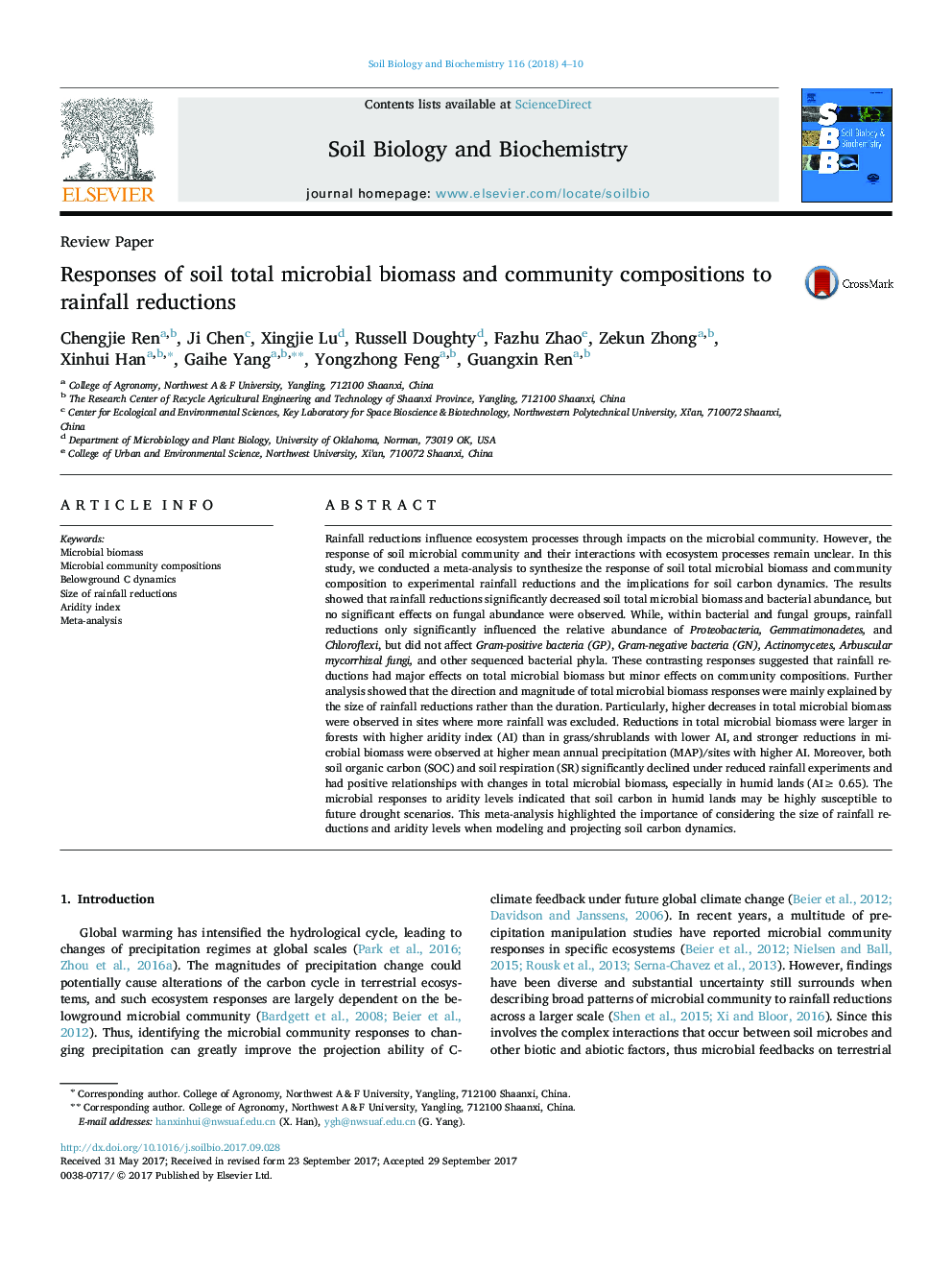| کد مقاله | کد نشریه | سال انتشار | مقاله انگلیسی | نسخه تمام متن |
|---|---|---|---|---|
| 5516204 | 1542568 | 2018 | 7 صفحه PDF | دانلود رایگان |
- Rainfall reductions negatively affected microbial biomass not community composition.
- Effect size of microbial biomass responses increased with size of rainfall reduction.
- Higher aridity led to greater microbial biomass response to rainfall reductions.
- Soil organic carbon in humid lands may be highly susceptible to future drought.
Rainfall reductions influence ecosystem processes through impacts on the microbial community. However, the response of soil microbial community and their interactions with ecosystem processes remain unclear. In this study, we conducted a meta-analysis to synthesize the response of soil total microbial biomass and community composition to experimental rainfall reductions and the implications for soil carbon dynamics. The results showed that rainfall reductions significantly decreased soil total microbial biomass and bacterial abundance, but no significant effects on fungal abundance were observed. While, within bacterial and fungal groups, rainfall reductions only significantly influenced the relative abundance of Proteobacteria, Gemmatimonadetes, and Chloroflexi, but did not affect Gram-positive bacteria (GP), Gram-negative bacteria (GN), Actinomycetes, Arbuscular mycorrhizal fungi, and other sequenced bacterial phyla. These contrasting responses suggested that rainfall reductions had major effects on total microbial biomass but minor effects on community compositions. Further analysis showed that the direction and magnitude of total microbial biomass responses were mainly explained by the size of rainfall reductions rather than the duration. Particularly, higher decreases in total microbial biomass were observed in sites where more rainfall was excluded. Reductions in total microbial biomass were larger in forests with higher aridity index (AI) than in grass/shrublands with lower AI, and stronger reductions in microbial biomass were observed at higher mean annual precipitation (MAP)/sites with higher AI. Moreover, both soil organic carbon (SOC) and soil respiration (SR) significantly declined under reduced rainfall experiments and had positive relationships with changes in total microbial biomass, especially in humid lands (AI⥠0.65). The microbial responses to aridity levels indicated that soil carbon in humid lands may be highly susceptible to future drought scenarios. This meta-analysis highlighted the importance of considering the size of rainfall reductions and aridity levels when modeling and projecting soil carbon dynamics.
Journal: Soil Biology and Biochemistry - Volume 116, January 2018, Pages 4-10
